January Itinerary in Japan Day 2 (Yamagata Meal edition)
(Wednesday, January 26)
Table of contents
1. Notoya Ryokan
I had breakfast at the restaurant of Notoya Ryokan. I have always loved breakfast at hot spring inns. Breakfast at a hot spring inn has many side dishes, and I feel always happy. There were many types of breakfast at Notoya Ryokan, and I was very satisfied.

2. Issaan Branch
I took the shuttle bus from Notoya Ryokan to Oishida Station from Ginzan Onsen. After that, I went to Shinjo station by local train from Oishida station. At Shinjo station, there was a waiting time of more than an hour for Tsuruoka. Therefore, I went to “Issaan Branch”, which is a little over 10 minutes walk from Shinjo Station, for lunch.
“Issaan Branch” is said to be the birthplace of Shinjo City’s famous “Torimotsu (chicken offal) Ramen”. There is also “Issaan Main Store” near Shinjo Station, but the main store mainly sells Japanese soba noodles and does not offer “Torimotsu Ramen”. You need to be careful not to make a mistake. I don’t know why the branch, not the main store, is the origin of “Torimotsu Ramen”. It is unclear whether the Issaan branch and the main store are same group.
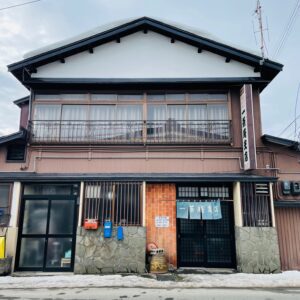
“Torimotsu Ramen” is a specialty of Shinjo City, but it is a ramen that has been sold as a special product of Shinjo after it was extended to Shinjo Station on the Yamagata Shinkansen in 1999. At the time of the extension of the Shinkansen, only a few stores such as the “Issaan Branch” were handling “Torimotsu Ramen”.
Originally, there were many farmers in the Mogami region such as Shinjo who kept chickens, and it seems that they had a custom of killing one chicken and cooked as chicken motsu-ni (boiled chicken offal) at the time of celebration. And since some customers started to order and eat ramen and chicken motsu-ni (boiled chicken offal) at the same time, it seems that “Torimotsu ramen” was born, which is a ramen with chicken motsu-ni.
The parts used for “Torimotsu ramen” are the heart, gizzards, ovary, etc. called red motu. “Torimotsu Ramen” at “Issaan Branch” is a perfect balance of light soy sauce soup and “Torimotsu”. It’s a very easy-to-eat and nostalgic ramen, and when I came to Shinjo, I wanted to try “Torimotsu ramen” again.

What was interesting about the menu of “Issaan Branch” was “Nuruma Motsu Ramen” with lukewarm soup. However, while I was eating, almost all the customers ordered “Torimotsu Ramen”, and none of them ordered “Nuruma Motsu Ramen”.
3. Izakaya Seigo
After sightseeing in Tsuruoka city, I had dinner at “Izakaya Seigo”. The counter of “Izakaya Seigo” was deep, spacious and cozy. I love the deep counter izakaya.
At “Izakaya Seigo”, I had assorted sashimi, grilled shiitake mushrooms and shishito green pepper, grilled squid, motsu-ni (gut stew), sashimi of cod milt, and “Dongara-jiru (cod soup)”.
“Dongara-jiru (Chunky cod stew)” is a local dish that represents the Shonai region and has been selected by the Ministry of Agriculture, Forestry and Fisheries as one of the “100 Best Local Cuisine”. Tsuruoka City and Sakata City hold the “Japan Sea Cod Festival” every year. You can’t see the cod in the soup in the photo, but in reality, the cod was lumpy and it was delicious “Dongara-jiru (Chunky cod stew)”. “Dongara” is a word that refers to “the offal of a fish”, and “Dongara-jiru (Chunky cod stew)” is made from “the offal of a cod”.
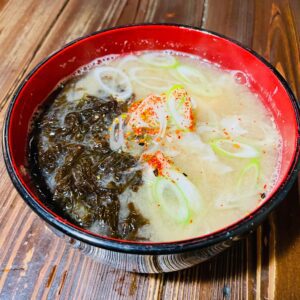
At Shonai beach, Pacific cod is a representative fish of winter, and the aforementioned “Dongara-jiru (Chunky cod stew)” is famous. Shirako (milt of cod) is also delicious because they can catch delicious cod. Of course I ordered it because I love the trolley-textured milt. It was the most delicious milt that goes well with sake from the Shonai region.
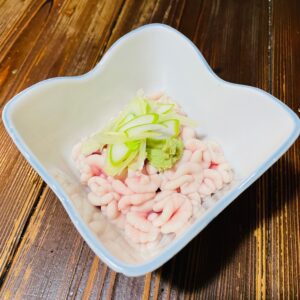
Assorted sashimi, grilled shiitake mushrooms and shishito green pepper, grilled squid, motsu-ni (gut stew) were all delicious and very satisfying.
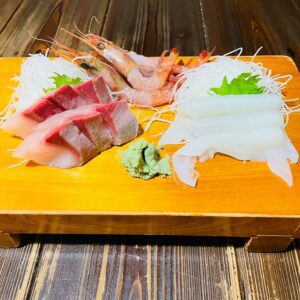
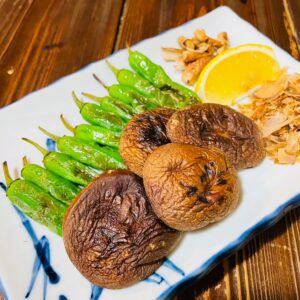

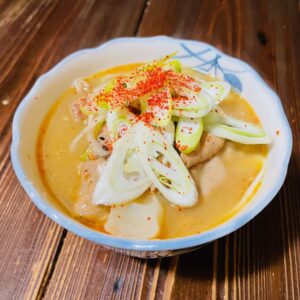
I wrote in my blog on February 9th that Tsuruoka City was the only city in Japan to be selected as a “UNESCO Creative City of Gastronomy“. In Tsuruoka City, there are many seafood such as seafood from the Sea of Japan (such as cherry salmon and cold), mountain food such as edible wild plants, edible fungus. In addition, Tsuruoka City is blessed with many ingredients such as rice, bamboo shoots, and dadacha beans from the Shonai Plain.
Buddhist cuisine (vegetable food) as a sacred place for training is also famous. Tsuruoka City is also the birthplace of school lunches in 1889.
In fact, Tsuruoka City is very large and boasts the 7th largest municipality in Japan and the 1st largest area in the Tohoku region (source wikipedia, 2015). I am convinced that the ingredients are abundant.
I like the Shonai region, where the food is delicious, the scenery is wonderful, and there are hot springs, so I travel many times. By all means, I would like many people to go on a trip to the Shonai region.
Note: The departure / arrival times, fares, admission fees, meal fees, etc. of transportation listed in the text are as of the time of writing the BLOG. Please check for yourself when you go on a trip as it may change in the future.